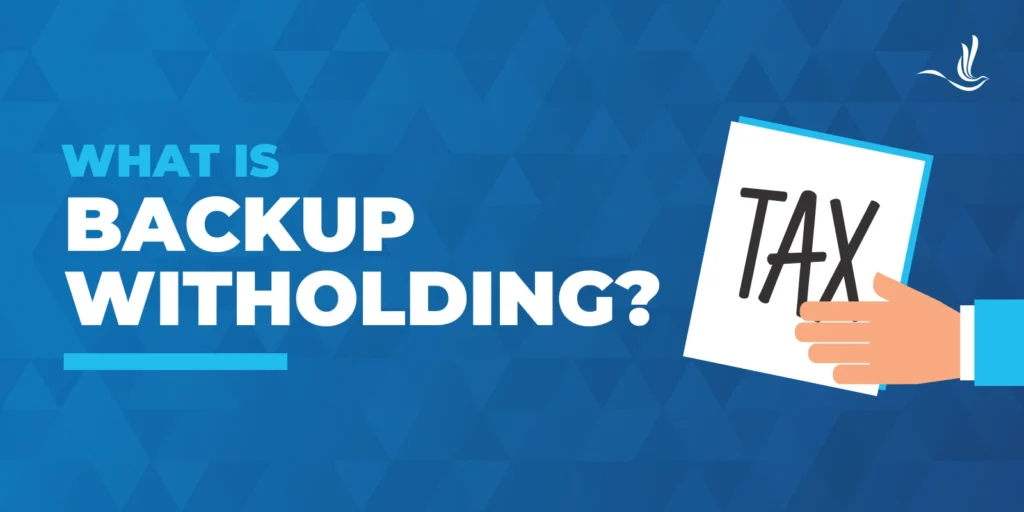
In the complex world of taxes and financial regulations, backup withholding is a concept that often raises questions for taxpayers. While it might sound intimidating, it serves a crucial purpose in ensuring tax compliance and preventing underreporting of income. Let’s delve into what backup withholding entails, why it’s implemented, and how it can impact individuals and businesses.
What is Backup Withholding?
Backup withholding is a precautionary measure enforced by the IRS to guarantee that income tax is collected on certain payments. It serves as a safeguard against underreporting of income by taxpayers. It’s commonly used for those who fail to provide accurate taxpayer identification numbers (TINs) or those who have been flagged for potential underreporting or non-compliance. Backup withholding requires payers, such as employers or financial institutions, to withhold a specified percentage of certain payments to individuals. These payments typically include interest, dividends, and other types of income.
Who is Subject to Backup Withholding?
Several scenarios may trigger backup withholding:
- Incorrect TIN: A taxpayer fails to provide their correct TIN to a payer. This often occurs when individuals provide incorrect Social Security numbers or employer identification numbers on tax documents.
- Underreporting or Non-compliance: An individual or entity has previously underreported income, failed to file tax returns, or been subject to penalties for non-compliance. This helps ensure that taxes are collected on the correct amount of income.
- Interest and Dividend Payments: Backup withholding may apply to certain types of income, including interest, dividends, and other investment earnings. It also applies to rents, royalties, gambling winnings, and other sources of income.
- Failure to Certify Exemption: Certain individuals or entities may be exempt from backup withholding if they meet specific criteria outlined by the IRS. If a taxpayer fails to certify their exemption status when required, withholding may be enforced.
Exemptions
Most U.S. citizens are exempt from backup withholding if they provide their TIN or SSN with financial institutions. Certain types of income are also exempt. Common examples include:
- Cancelled debts
- Unemployment
- State or local tax refunds
- Qualified tuition program income
- Real estate transactions
- Retirement distributions
- Employee stock ownership distributions
How Does Backup Withholding Work?
When a payer is required to initiate backup withholding, they are mandated to withhold a specified percentage of the payment before issuing it to the payee. The current backup withholding rate is typically 24% of the payment. This withheld amount is then remitted to the IRS on behalf of the payee. The withholding won’t be a surprise though. The tax filer will be notified several times of the intent to withhold.
How to Avoid
To prevent this withholding, taxpayers should ensure that their TINs are accurately provided to payers on relevant tax documents. This includes completing Form W-9 truthfully and promptly when requested by a payer. Additionally, maintaining compliance with tax filing obligations and promptly addressing any issues with the IRS can help mitigate the risk of backup withholding.
Credit for Backup Withholding
While you cannot claim a tax credit for backup withholding, the amount withheld is still considered tax already paid to the IRS. So, when you file your tax return, you will report the income subject to backup withholding, and the amount withheld will be reflected on your return. This helps ensure that you receive credit for the taxes already paid when calculating your final tax liability for the year.
Example
Let’s say you failed to report $500 in taxable income on last year’s tax return. The IRS then attempted to contact you for months letting you know you are subject to backup withholding. After six months, you open a new brokerage account and submit a W-9. On the W-9, you’ll need to cross out line item 2, which is an acknowledgment that you’re subject to this withholding. The brokerage company will then withhold 24% of your payments. At the end of the year, the brokerage company will send you a 1099 and indicate how much federal income tax was withheld on line 4. Your federal income tax liability will decrease. Furthermore, if you owe less than the withholding amount, you may receive a tax refund.
Tax Help for Those Subject to Backup Withholding
Backup withholding is a mechanism employed by the IRS to promote tax compliance. While it may seem burdensome, it serves a vital role in maintaining the integrity of the tax system. By understanding the circumstances under which backup withholding applies and taking proactive steps to comply with tax regulations, individuals and businesses can navigate the complexities of taxation more effectively. Optima Tax Relief is the nation’s leading tax resolution firm with over $1 billion in resolved tax liabilities.
If You Need Tax Help, Contact Us Today for a Free Consultation